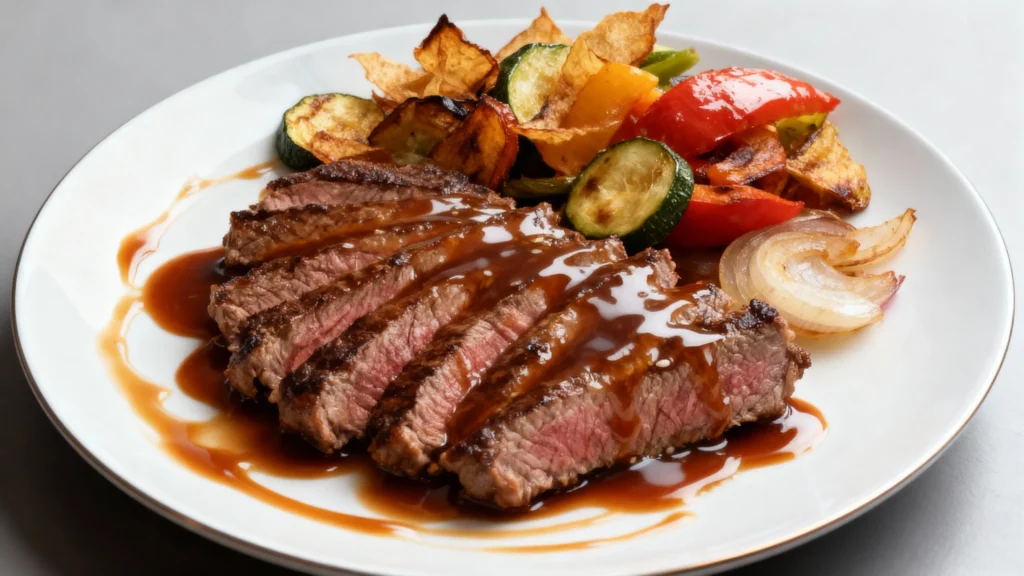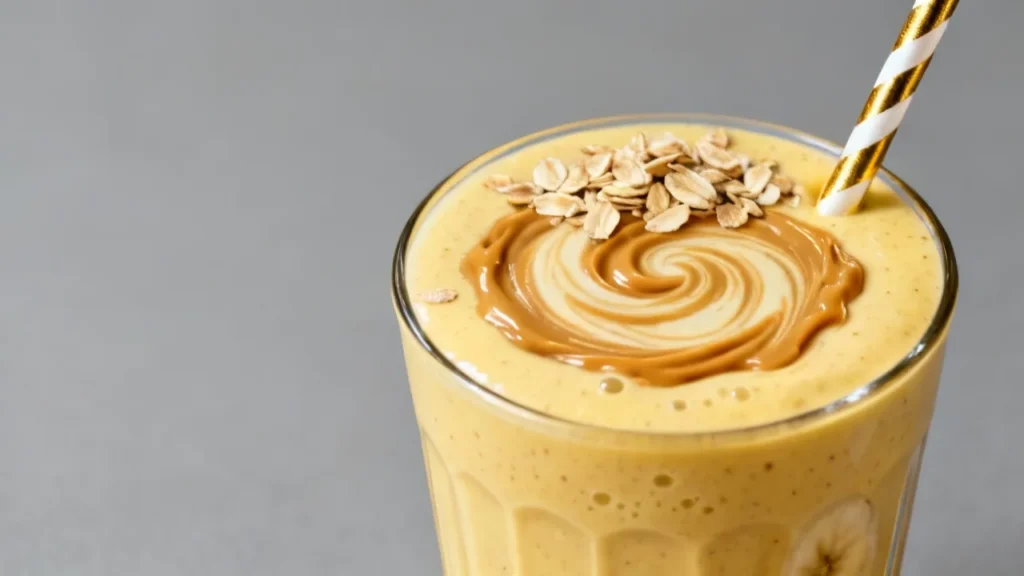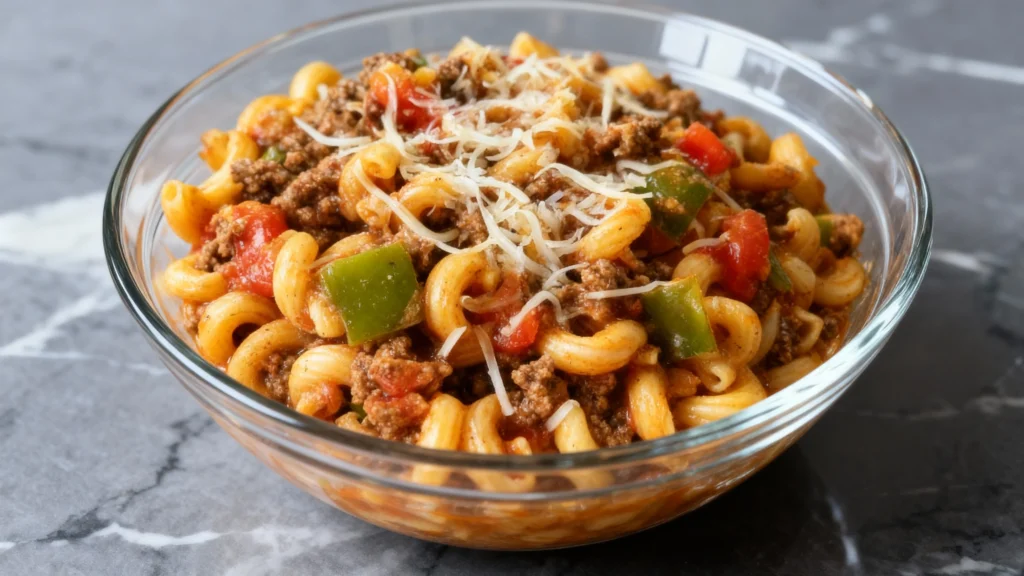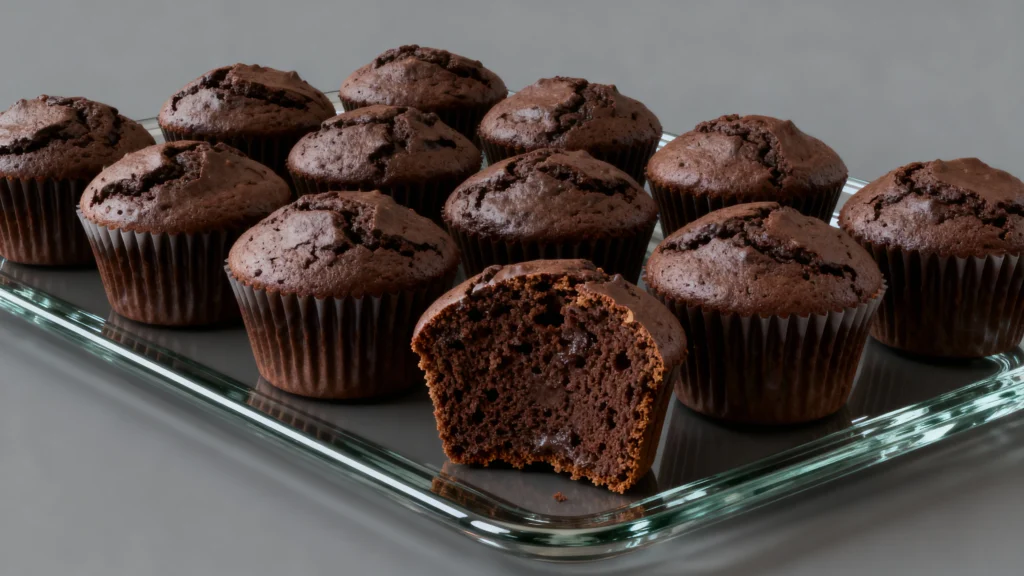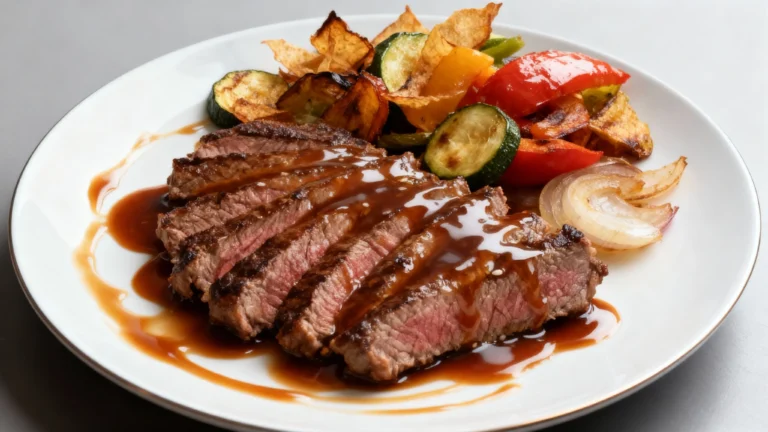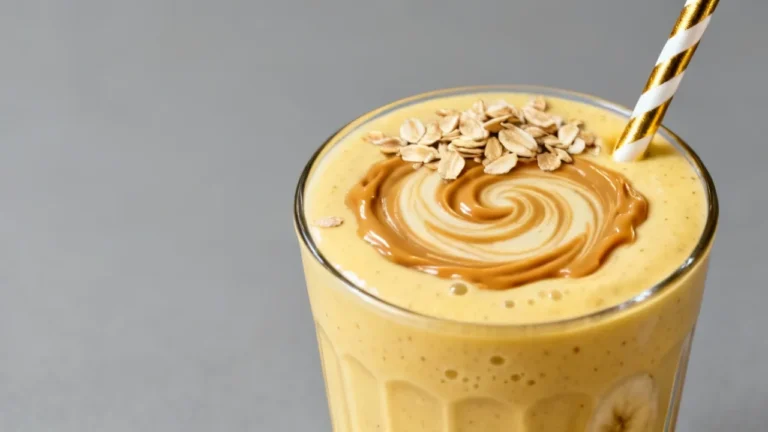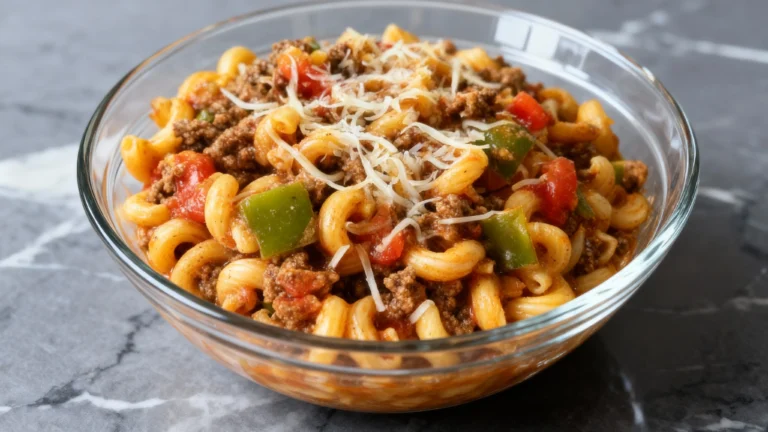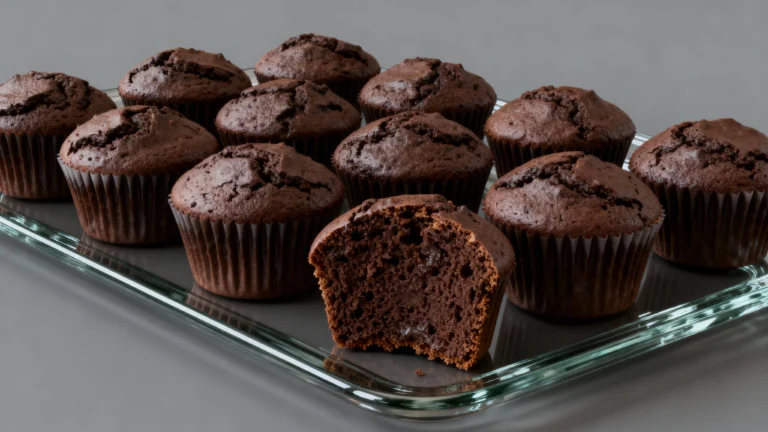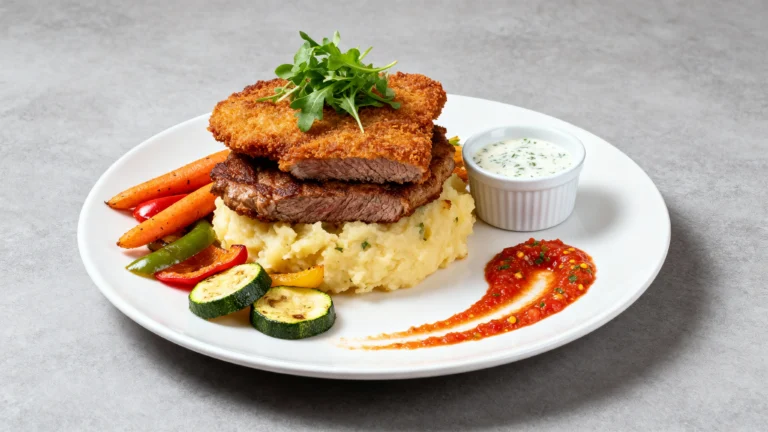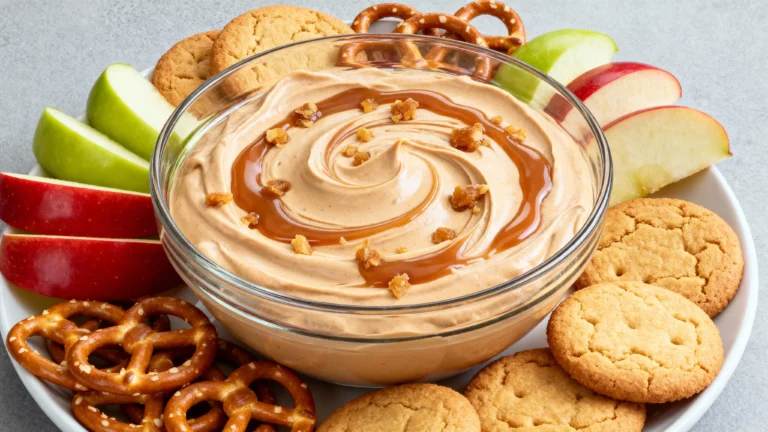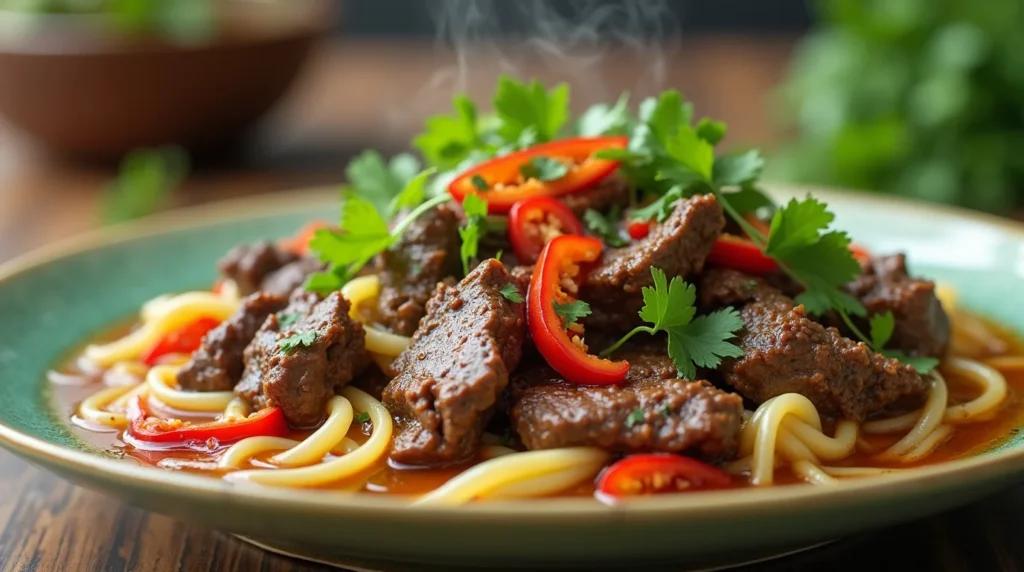
Beef Stew With Egg Noodle Noodle Viet: How to Make It Perfect Every Time
Share this recipe
Winter’s chill brings nothing like a warm bowl of Vietnamese beef stew with egg noodles. Memories of my grandmother’s kitchen come alive. There, spices filled the air, and warmth spread from her cooking.
This stew is more than food—it’s a journey through generations and cultures. It’s a tale of tradition, skill, and love in every spoonful.
Let’s explore a recipe that turns simple ingredients into a special beef stew with egg noodle noodle viet experience.
Key Takeaways
- Discover the authentic flavors of Vietnamese cuisine
- Learn a traditional beef stew recipe passed through generations
- Understand the cultural significance of comfort food
- Master the art of balancing complex spices
- Create a hearty meal that warms both body and soul
Understanding the Rich Heritage of Vietnamese Beef Stew
Vietnamese cuisine is rich and diverse, with beef noodle soup being a key part. This dish has a long history, shaped by cultural exchange and innovation.
The story of Asian beef noodles is complex. It shows how Vietnamese food culture evolved over time. Simple ingredients were turned into something special by generations of cooks.
Origins and Cultural Significance
Vietnamese beef noodle soup combines local and international flavors. Its development was influenced by:
- French colonial cooking methods
- Local farming practices
- Trade networks
“Food weaves a narrative of culture, reflecting the history, traditions, and connections of the people who create it.” – Vietnamese Culinary Historian
Regional Variations Across Vietnam
Every region in Vietnam has its own version of beef noodle soup. The northern mountains, central plains, and southern coasts all have their own flavors.
- Northern Style: Lighter broth, fewer spices
- Central Region: Bolder, more complex flavors
- Southern Approach: Sweeter, more herb-focused
Traditional Cooking Methods
Making authentic Vietnamese dishes takes time and skill. Traditional methods include slow simmering and choosing the right ingredients. These techniques honor the past while creating new flavors.
Learning these methods connects you to a long-standing culinary tradition. It shows how Vietnamese cuisine has grown while staying true to its roots.
Essential Ingredients for Beef Stew With Egg Noodle Noodle Viet
Making a true Vietnamese beef stew needs the right ingredients. These ingredients add depth, flavor, and tradition to your dish. The secret to beef stew with egg noodle noodle viet is in its mix of fresh parts.
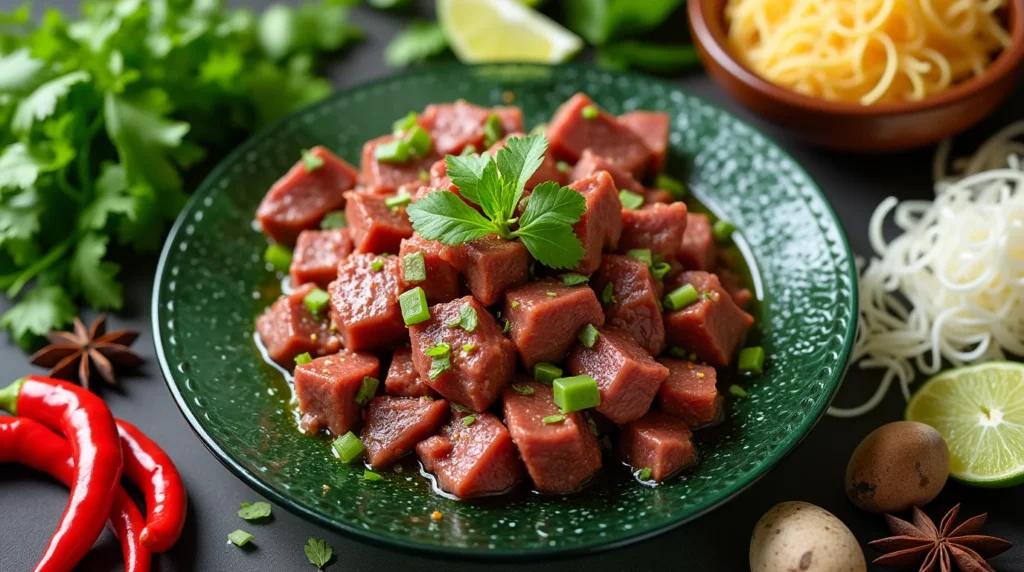
- Beef Selection: Pick tender cuts like chuck roast or brisket for slow cooking
- Noodles: Fresh egg noodles are perfect for soaking up the broth
- Aromatics: Lemongrass, ginger, and garlic are the base flavors
- Spices: Star anise, cinnamon, and black pepper add complex tastes
“The soul of Vietnamese cooking is about balance and harmony of ingredients” – Traditional Vietnamese Chef
Knowing each ingredient’s part makes your Vietnamese beef stew special. Carrots and onions add sweetness, while good beef makes it tender.
Choosing top ingredients is more than just taste. It’s about keeping a cooking tradition alive for generations.
Selecting and Preparing the Perfect Cut of Beef
Creating a top-notch beef brisket noodle soup starts with picking the right meat. The choice you make can either make or break the dish. Knowing about beef cuts can turn your meal from good to great.
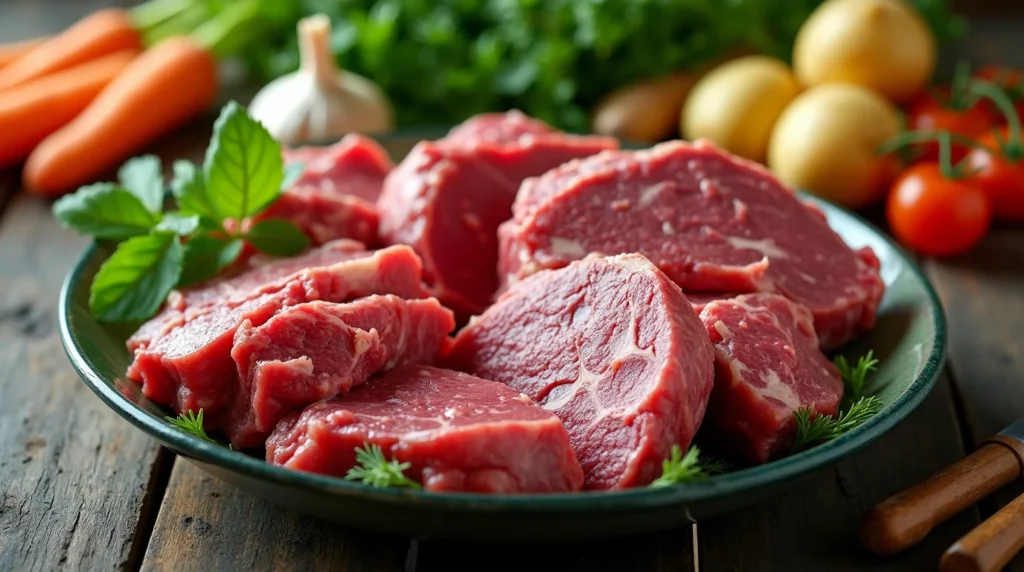
Finding the perfect meat is key to a delicious dish. Not all beef cuts are the same when it comes to making a tasty stew.
Best Beef Cuts for Stewing
- Chuck Roast: Ideal for slow cooking, packed with rich marbling
- Brisket: Perfect for deep, intense flavor profiles
- Short Ribs: Tender and incredibly succulent
- Shanks: Creates an exceptionally rich broth
Marination Techniques
Marinating your beef is crucial for deep, complex flavors. The right marinade can turn tough meat into a tender delight.
“The key to great meat is patience and the right ingredients” – Chef Martin Yan
Tenderizing Methods
- Mechanical tenderizing with a meat mallet
- Enzymatic tenderization using papaya or pineapple
- Acid-based marinades with vinegar or citrus
- Slow cooking to break down tough muscle fibers
Remember, the perfect beef for your vietnamese beef stew needs careful selection, thoughtful preparation, and a bit of passion.
The Art of Making Authentic Vietnamese Egg Noodles
Making homemade egg noodles is a special skill in Vietnamese cooking. It’s the first step to making a delicious noodle stew. You’ll learn how to make perfect egg noodles from scratch.
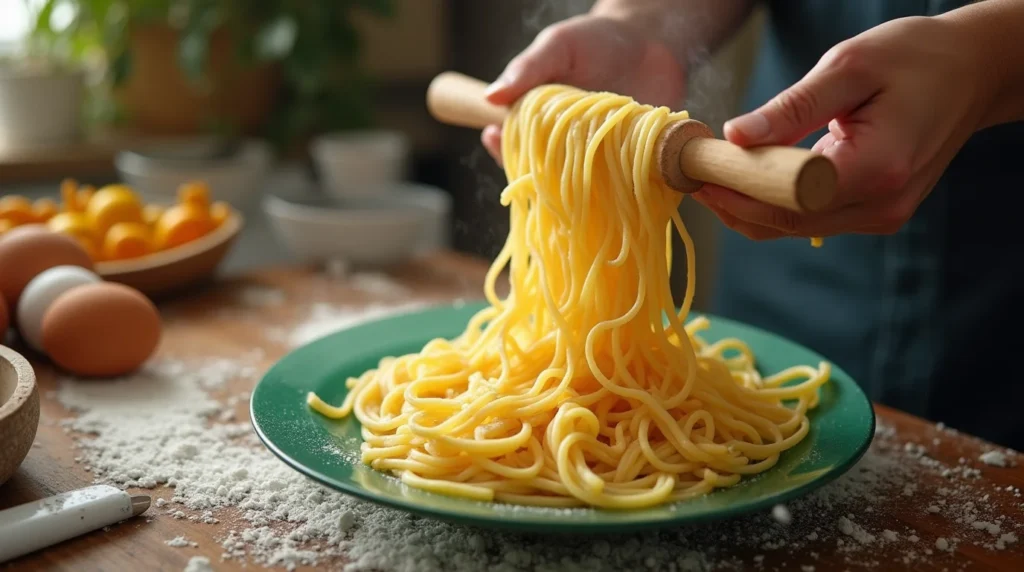
To make your egg noodles, you need a few important ingredients and techniques. Start with good flour, fresh eggs, and a bit of salt. The secret is in mixing and kneading well. This turns simple ingredients into soft, delicate noodles.
- Select fine wheat flour for smooth texture
- Use room temperature eggs for better binding
- Knead dough until elastic and smooth
- Rest the dough for optimal consistency
Traditional Vietnamese egg noodles are different from store-bought ones. Fresh noodles give your noodle stew a special texture. Roll the dough thin, almost clear, before cutting it into thin strands.
“Handmade noodles are the heart of Vietnamese culinary tradition” – Chef Mai Nguyen
Getting better at making these noodles takes practice. Each batch will help you get closer to authentic Vietnamese cooking. Remember, patience is key to turning simple ingredients into a culinary masterpiece.
Mastering the Aromatic Beef Broth Base
Making a great beef noodle soup starts with a rich, complex broth. This broth should capture the essence of Vietnamese beef stew. Each ingredient adds to the broth’s depth and character.
The base of a true Vietnamese beef stew comes from top-notch ingredients and traditional cooking. Your broth will turn into a culinary masterpiece with careful preparation.
Key Spices and Seasonings
To make your beef noodle soup better, use these key spices:
- Star anise for warm, licorice-like notes
- Cinnamon sticks for subtle sweetness
- Black peppercorns for gentle heat
- Fresh ginger for brightness
- Whole cloves for deep aromatics
Broth Clarification Techniques
To get a clear broth, you need patience and precision. Skim often while simmering and strain with a fine-mesh strainer. Gentle heat is your ally in creating a pristine beef noodle soup base.
Achieving the Perfect Balance of Flavors
“A great broth tells a story of tradition and technique” – Vietnamese Culinary Master
Getting the flavors right in your Vietnamese beef stew is key. It’s about balancing saltiness, sweetness, and umami. Use fish sauce, rock sugar, and herbs to create a harmony that touches the soul of asian comfort food.
Step-by-Step Guide to Vietnamese Beef Stew Preparation
Making a real Vietnamese beef stew with egg noodles needs care and love. Your cooking adventure starts with picking the best ingredients for a great taste.
- Choose a tender cut like chuck roast or short ribs
- Remove excess fat and cut the meat into 1-inch cubes
- Season well with salt, pepper, and Vietnamese spices
Browning the meat is key for the beef stew with egg noodle noodle viet. Heat a big Dutch oven and sear the meat until it’s golden. This step adds rich, deep flavors.
“The key to an outstanding Vietnamese beef stew is patience and the careful layering of rich, aromatic flavors.” – Vietnamese Culinary Expert
Now, make your aromatic broth:
- Sauté onions and garlic
- Add tomato paste for depth
- Pour in beef stock
- Incorporate star anise and cinnamon
Let the stew simmer slowly until the meat is tender. Cook the egg noodles separately. Then, serve them hot with the flavorful broth.
Pro tip: Let the stew rest for 15 minutes before serving to enhance flavors.
Pairing and Garnishing Your Noodle Dish
Beef pho is more than just a recipe. Vietnamese cuisine adds a rich layer of garnishing techniques. These techniques turn simple dishes into culinary masterpieces. The right toppings can make your dish more complex and flavorful.
Traditional Accompaniments
Classic Vietnamese noodle dishes shine with traditional garnishes. These add vibrant flavors and textures. Here are some authentic choices:
- Fresh Thai basil leaves
- Crisp bean sprouts
- Thinly sliced green onions
- Lime wedges
- Sliced red chili peppers
Modern Garnishing Options
Modern chefs are adding new twists to beef pho. They keep the traditional roots but add exciting new touches. Try these modern garnishes:
- Crispy fried shallots
- Microgreens
- Pickled vegetables
- Herb-infused oils
Sauce and Condiment Selection
The perfect sauce can elevate your dish from ordinary to extraordinary. Here are some top condiments:
- Sriracha for heat lovers
- Hoisin sauce for sweetness
- Fish sauce for umami depth
- Chili oil for extra kick
“The art of garnishing is about creating a symphony of flavors that dance on your palate.”
For an amazing beef pho, balance flavors and textures. Let your creativity flow while staying true to the dish’s roots.
Tips for Storage and Reheating
Keeping your noodle stew tasty means storing and reheating it right. Your Vietnamese beef stew can stay delicious for days if you follow the right steps.
Keeping your beef noodle soup fresh is key. Here are some important storage tips:
- Store the noodle stew in an airtight container
- Separate noodles from broth when possible
- Refrigerate within two hours of cooking
- Consume within 3-4 days for optimal taste
When reheating your Vietnamese beef stew, be gentle. Slow and gentle warming preserves the dish’s integrity.
“The key to perfect reheated beef noodle soup is patience and low heat.”
Here are some good ways to reheat your noodle stew:
- Stovetop method: Use low heat and stir occasionally
- Microwave technique: Cover and heat in short intervals
- Add a splash of broth to prevent dryness
Freezing is also great for keeping your Vietnamese beef stew for longer. Properly sealed containers can keep it good for up to three months. This way, you can enjoy it whenever you want.
Conclusion
Your journey through beef stew with egg noodle noodle viet has shown you the beauty of Vietnamese cuisine. It’s more than food; it’s a way to connect with family and tradition. This dish brings people together through its rich flavors and cooking methods.
To make this dish, you need patience, skill, and a love for Vietnamese cooking. Choosing the right beef, making authentic noodles, and creating a flavorful broth are key. These steps turn a simple recipe into a special meal that honors Vietnamese food.
Trying this stew in your kitchen lets you dive into Vietnamese flavors and techniques. It’s perfect for both experienced cooks and those new to Vietnamese food. The beef stew with egg noodle noodle viet is a tasty way to explore Vietnam’s culinary world.
Every bite of this stew tells a story of tradition and family. It’s about the careful mix of spices that makes this dish so special. Now, you can cook more than just a meal. You can connect with a rich culinary heritage that inspires food lovers everywhere.
If you enjoyed this recipe, imagine savoring a Perfectly Savory Beef Stew Roux Japanese Style! Give it a try and explore even more comforting and World flavors dishes to add to your culinary collection.
Beef Stew with Egg Noodles (Vietnamese Style) Recipe
Description
Indulge in the comforting warmth of Vietnamese beef stew with egg noodles. This hearty dish blends rich, aromatic broth with tender beef and chewy egg noodles, bringing generations of culinary tradition to your table. Infused with star anise, cinnamon, and fresh herbs, this dish is the perfect balance of savory, sweet, and umami flavors.
Recipe Details
- Serving Size: 4 servings
- Prep Time: 30 minutes
- Cook Time: 2 hours
- Total Time: 2 hours 30 minutes
Ingredients (Per Serving)
- 8 oz beef chuck, cubed
- 4 oz egg noodles
- 2 tbsp vegetable oil
- 1 small onion, chopped
- 2 garlic cloves, minced
- 1 tbsp tomato paste
- 1 stalk lemongrass, smashed
- 1-inch piece ginger, sliced
- 1-star anise pod
- 1 cinnamon stick
- ½ tsp black peppercorns
- 1 tbsp fish sauce
- 1 tsp soy sauce
- ½ tsp sugar
- 2 cups beef broth
- 1 small carrot, sliced
- 1 small potato, cubed
- Fresh cilantro & Thai basil for garnish
- Lime wedges for serving
Nutritional Facts (Per Serving)
- Calories: 420
- Protein: 28g
- Carbohydrates: 35g
- Fat: 18g
- Fiber: 3g
- Sodium: 480mg
- Sugar: 4g
Instructions
Prepare the Ingredients
- Cut the beef chuck into 1-inch cubes and season with salt and pepper.
- Mince the garlic, slice the onion, and smash the lemongrass.
Sear the Beef
- Heat the vegetable oil in a Dutch oven or heavy-bottomed pot over medium-high heat.
- Add the beef and sear until browned on all sides (about 5 minutes). Remove and set aside.
Build the Aromatic Base
- In the same pot, sauté the chopped onion, minced garlic, and sliced ginger until fragrant.
- Stir in the tomato paste and cook for another minute.
Simmer the Broth
- Return the beef to the pot. Add lemongrass, star anise, cinnamon, black peppercorns, fish sauce, soy sauce, sugar, and beef broth.
- Bring to a gentle boil, then reduce the heat to low. Cover and simmer for 1.5 hours until the beef is tender.
Add Vegetables
- Add sliced carrots and potatoes to the stew. Continue simmering for another 30 minutes until vegetables are soft.
Cook the Egg Noodles
- In a separate pot, cook the egg noodles according to package instructions. Drain and rinse with cold water.
Serve & Garnish
- Divide the cooked noodles into bowls. Ladle the hot beef stew over the noodles.
- Garnish with fresh cilantro, Thai basil, and lime wedges.
- Serve hot and enjoy!


